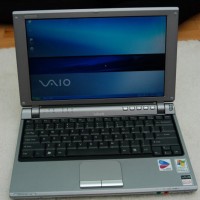It’s only been just over 3 months that I got my U70. I really enjoyed the size of this laptop – it’s just too cool. Having something so powerful yet so incredibly small was pretty stunning. It definitely had a high-tech factor of 10 and it certainly attracted a lot of attention.
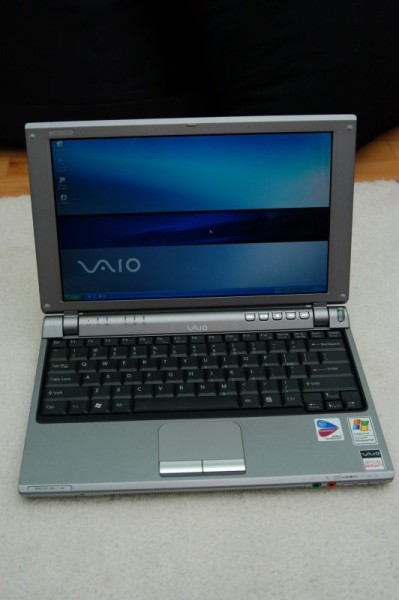
Sony Vaio VGN-T17GP
Having said that, as I began to use it more, I started to get bothered by a few short-comings. First, the U70 needed a bit of help in the design area. As I indicated, placing the power outlet at the bottom of the device made it extremely difficult to balance. You have to buy Sony’s case with the stand for it stand-up on its own. Otherwise, there was no way the screen could balance on its own. That was an additional US$70 expense. But that wasn’t the worst peeve I had, it was all down to what I thought the U70 would be able to do, had a significantly long battery life. It didn’t. As a result, after several months of repeated use, there wasn’t much choice but to review my options and consider moving on to something else. Sure, I could get an extra battery, but let me explain why I didn’t do that.
Battery life has suddenly become one of the key criteria in my laptop use. I am finding that from a practical standpoint, for me, there is such a big premium for long battery life when it comes to laptop. And I don’t mean gaining a few extra minutes from turning your laptop screen down to a paltry black glow, I mean, I want long battery life.
So with that in mind, I weighed my options. The most logical choice was of course to spring for the extended battery that was available for the U-series. The crazy thing about that is that the extended battery costs well over US$400! That to me is ridiculous, and you only gain 4 hours of use (versus the 2 hours you get with the standard battery). I cannot and will not justify spending another US$400 on just a battery. Consequently, the only other choice was to see if there were other options for a new, mini-notebook.
By coincidence, Sony had come out with specs on its new T-series notebooks. The most glaring spec to me was of course the quoted battery life of 8 hours, which would make it one of the longest if not the longest battery life offered as standard for a laptop. That caught my attention very quickly and I began to investigate this new laptop. In truth, the T-series didn’t look very exciting or enticing because it wasn’t a particularly striking design, have any unique features or come in some great color/shape. But sometimes, it’s what’s “under the hood” that counts and in that respect, the T-series was appealing. I’ll get to that a bit later.
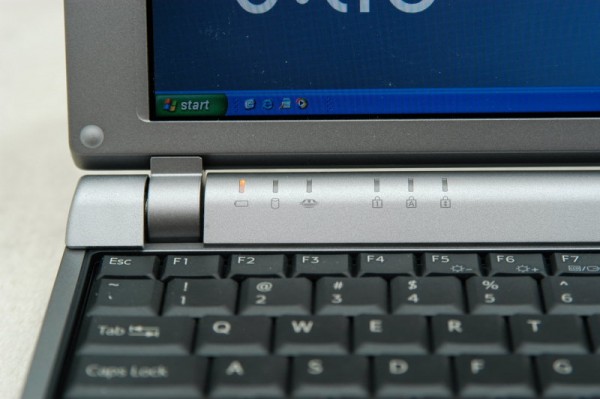
The most glaring spec to me was of course the quoted battery life of 8 hours
I wavered on what to do for over 2 weeks and then I finally saw the T-series in person and I was sold. I just wanted it. Next, I had to sell my U70. Well it turns out that the U70 is still in demand and there’s a general overall shortage. Someone suggested that the U-series was being discontinued, but the Sony HK store has said that the U-series will be sold here by the end of this year (and they have just started to advertise it on their website) so it looks as if it might still have a lot of life left. Anyway, because of the demand and the shortage, I got a great resale price. Considering that I didn’t have to pay another US$400 for an extra battery, and I got the T-series for only a few hundred dollars extra, I was pretty happy.
Form
The T series is a mini notebook that would fit into the same category as the TR-series and the Fujitsu P series notebooks. Consequently, it’s designed to be small and as a result, is not suited for everyone. Unlike the TR, the T does not have a built-in camera which is the most notable missing application. However, interestingly, the T series is slimmer than the TR and does end up feeling much smaller.
This profile is especially well liked because it makes it the laptop very thin and stylish. Even with the incorporation of the DVD+/-RW drive, the computer still maintains its slim design. The T17 has a very rectangular shape to it and though Sony touts “round-edges”, the shape is rather plain and “squarish”. While I think the T17 is rather sleek, it lacks any great or unique design. The shape is very typically rectangular and doesn’t feature any new design change from other newer Vaio laptops.
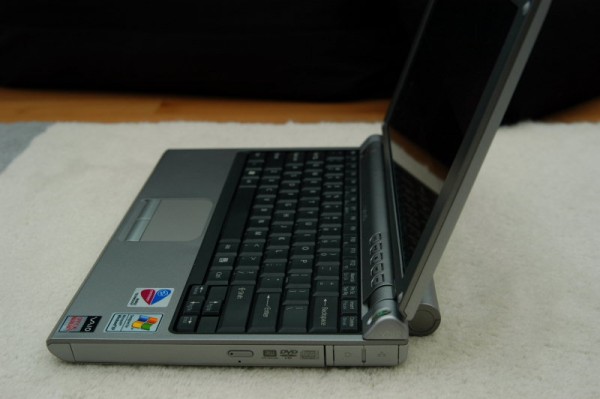
This profile is especially well liked because it makes it the laptop very thin and stylish
The T-series though does come in several different colors which in itself is a very different change in style for Vaio. The T comes in a red (actually more a deep maroon) and a blue in addition to the traditionally silver finish. At the time I bought the laptop, it was only available in red or silver and I chose the silver. Honestly, the maroon color is horrible looking. The silver is much more low profile and is in line with their existing color for other Vaio laptops. I have since seen the blue and I must say that it looks very nice and I might have chosen that had it been available. Different countries will have different options available so not everyone will have all the color choices.
The T does offer some new button layouts. There is a quick DVD button layout at the top of the keyboard, which is still accessible with the screen closed. This makes playback of music possible even with the screen closed. I really like this feature and I think it is a selling point. It can make having a MP3 players like the iPod nearly redundant, but I suppose there’s still some reason to carry those. You can control Sony’s Sonicstage playback, but the buttons work even on other non-Sony programs like iTunes so I was able to listen to hours of music with the laptop screen closed, but still turned on in my backpack while walking around. I’m not sure this is the best way to utilize the battery but say your transporting the T17 between your home and your office and you know that it’s going to be recharged later, well then you can just use the T17 as a personal music player. The overall strain on battery life isn’t too bad considering it already has a very good battery life and with the screen closed, the T17 could play music for quite sometime.
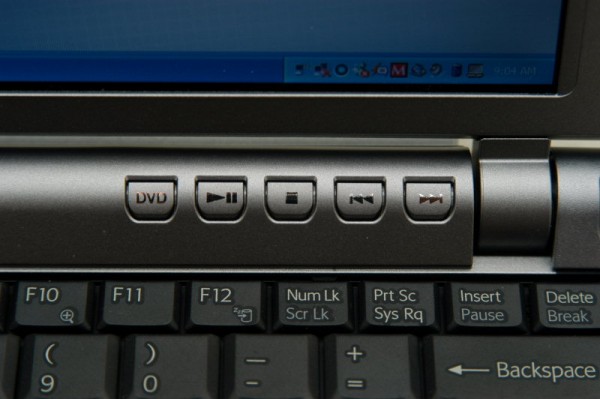
The T does offer some new button layouts.
Given that this has a larger, extended battery (which I’ll discuss in much greater detail later), the laptop still only weighs 1.38kg which is still extremely light. As I noted, the T feels much thinner than the TR and as a result has a much greater appeal to its sleek profile. The keyboard is less “elevated” off any desk surface which actually makes typing more comfortable. The keyboard pitch at 17mm still allows me to type relatively quickly but this might not be very ergonomic for anyone with larger hands or used to larger keyboards.
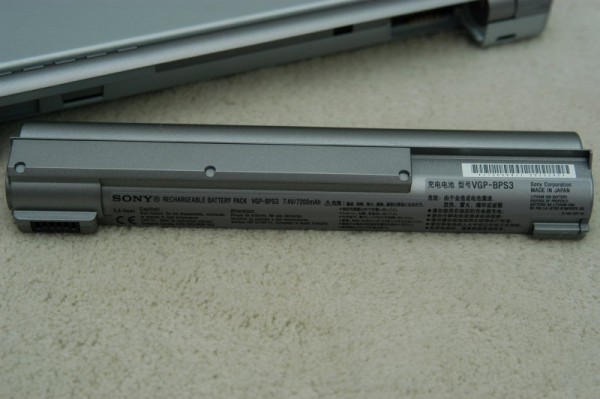
Sony Vaio VGN-T17GP Battery
Other than that, the T is very straightforward. There isn’t much change in the overall design that makes it particularly different. Two USB ports, firewire, VGA output and PC Card slot on the left; DVD drive on the right. I like the slim form factor overall.
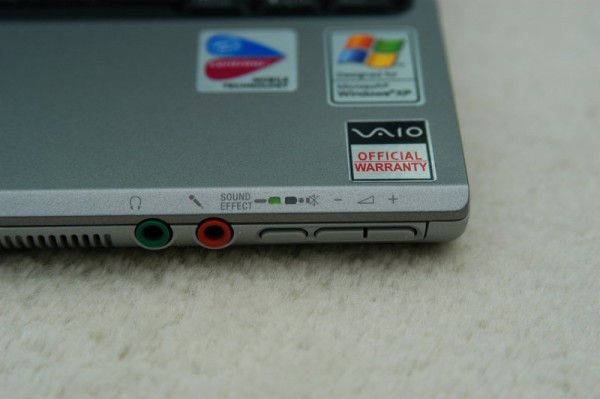
Two USB ports, firewire, VGA output and PC Card slot on the left; DVD drive on the right.
Function
First of all, the T17 is a full fledged laptop. Of course, given its size there are a few trade-offs. It does have a Centrino 1.1GHz chip which is a slight improvement over the TR chip I had. The 2MB cache does improve speed slightly and versus the TR, this is noticeably faster. The downside of something this small is that it has to have a shared video card. That will likely limit some ability to play certain games and running some heavy duty programs like Photoshop can be slightly slower than other full-sized laptops. But hey, this is a small, traveling laptop and that’s where it really excels. Basic program functions run superbly and I have no problems multi-tasking Word, Excel, Powerpoint, Outlook, Explorer, and a few IM programs. Those are probably going to be the bulk of the kind of work you do on this laptop. We’ll leave real photo editing for my larger, more powerful laptops.
The T17 comes with a 10.6″ Widescreen display. The screen has the new Clear Bright LCD which is supposed to be better than the previous XBRITE screen that Sony had on previous Vaio laptops. From what I can see, the Clear Bright is better for normal computer functions but the XBRITE is better for viewing movies. In truth, it’s quite similar. The T17 only has one lamp so that means it’s not as bright as some of the larger screen laptops which have 2 lamps. Having said that, I was fairly impressed with the screen brightness and it was noticeably better than the TR, which I was slightly disappointed didn’t have a better screen. It also appears sharper and brighter than the large 15″ Dell Inspiron 8200 UXGA screen that I also have which is fairly impressive.
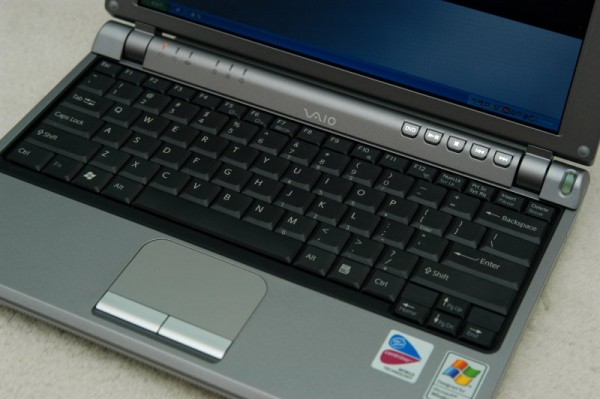
Basic program functions run superbly and I have no problems multi-tasking Word, Excel, Powerpoint, Outlook, Explorer, and a few IM programs.
The biggest lure to me was the T17’s battery life. More than anything else, this was the best feature/attraction that makes the T17 stand out above other laptops. In general, laptops are already heavy, and adding additional bulk like battery power is not something most designers plan for. Those that want extra power can always buy another battery pack. Unfortunately for the most part, extra batteries for laptops are expensive. The standard laptop battery has between 2400 mAh to about 4000 mAh. That seems to be the optimal size between decent battery life and size/weight. Unfortunately, that gives most batteries approximately 2-3 hours of standard life. That’s pretty unacceptable. Remember the U70 only had an 1800 mAh battery and life ran down pretty quickly despite its overall small size.
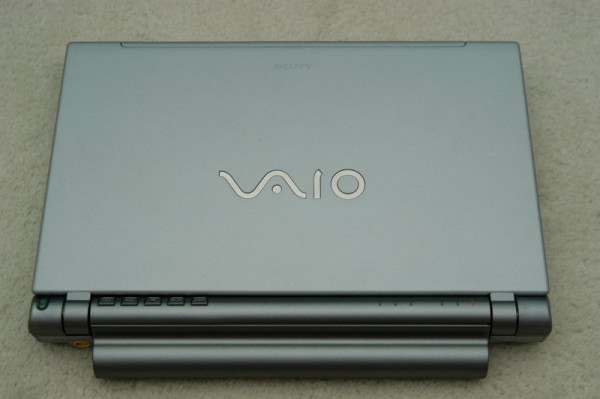
Sony Vaio VGN-T17GP Top View
What I like the most about the T17 is that it comes standard with a 7200 mAh battery. Importantly, this does not add a huge amount of additional bulk. There is an extra cell that sticks out the back but it isn’t much of a big deal and doesn’t make the laptop look ugly or feel awkward in any sense. I suppose to some, this isn’t a very big deal because manufacturers, especially Sony, have for a long time sold “extended” batteries for laptops. Usually, these are much higher capacity (double or even triple the “standard” battery model) and could equate battery power to something quite similar to what was given with the T17. The issue I have is that Sony and many other manufacturers charge an obscene amount for these batteries. For example, when I was looking at the S-series Vaio in comparison, I inquired about their optional 7200 mAh battery which would bring it in line with the T17. The price of that battery alone was close to US$400. For a roughly US$2000 computer, you’d need to pay an extra 20% just to get a higher capacity battery! That seems unreasonable to me.
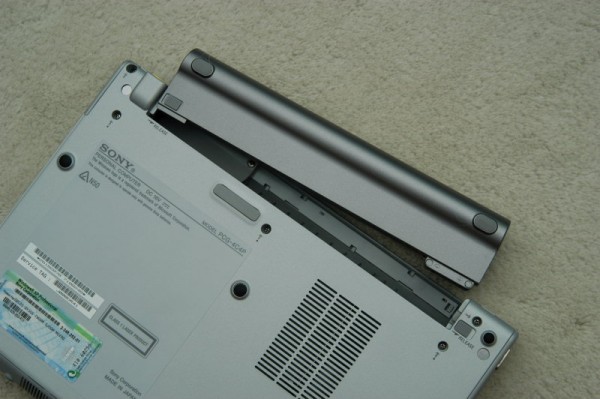
Those that want extra power can always buy another battery pack.
In comparison, looking at the T17, it just seems like a much better value. I’ve rambled on for way too long about the battery, but I think you can get a sense of what I’m driving at – the T17 is the right package in this respect. So how did the battery do? Well it’s pretty amazing. It’s the first time that I’ve been able to work on full resolution relying just on a battery for hours and hours. Realistically, you get at least 5 whole hours of pure activity (I get almost 6 hours in total of normal use). That is the best battery life that I’ve been able to ever get on a laptop, and all this while running at the highest brightness screen setting. I could not have been happier. Sony claims 8 hours of battery life and I’m sure that if you tweak with the brightness setting you can get a few more hours in there.
Sony bundles a lot of its standard software on the Vaio. I hardly use any of it so I uninstalled some of it to free up some hard disc space (I have 40GB overall). The T17 did come with some standard features which kept its price high (in addition to having that “Sony” premium). A DVD+/- RW drive comes standard so you can burn DVDs. I burned one disc and although it worked without a hitch, it was relatively slow, limited by the 2x DVD writing speed. Still it’s fantastic to have and is a really easy way to backup, make copies, etc.
Other than that, the T17 has relatively standard laptop specs that you have come to expect. 512MB of RAM keeps things on the fly, 802.11 b/g for fast connectivity, 2 USB 2.0 ports, firewire, PC card slot, etc. The T17 comes with a new Memory Stick slot that takes the MS Duo cards without an adapter. One thing that is pretty disappointing is the “speakers” that they put into the T17. I would have thought given today’s technology, that the speakers would sound much better despite its limited size. No matter how I tweaked the settings, the sound is pretty horrible and most anyone will have to use headphones to listen to anything on the T17. Thus, watching movies or listening to music on the Vaio without headphones is somewhat disappointing. The model I bought did not come with Bluetooth but I saw the T17 model from the US and it did come with Bluetooth. This would have been a nice addition. Also, in the past week, a lesser model, the T16 has appeared. The only difference seems to be a CDRW/DVD combo drive instead of a DVD +/-RW drive and hence US$130 less.
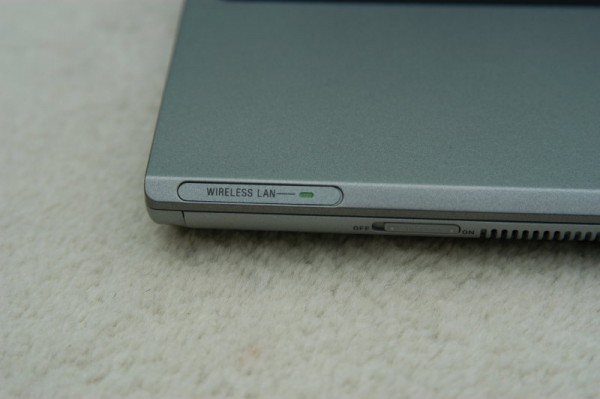
512MB of RAM keeps things on the fly, 802.11 b/g for fast connectivity, 2 USB 2.0 ports, firewire, PC card slot, etc
Factor
Overall, in terms of small laptops, I really like the T17. It would seem to me like the ESSENTIAL laptop you would take if you had to be completely mobile. The battery life is absolutely outstanding and the screen sharpness/brightness is excellent. Sure you could buy an additional battery or an extended battery that would help resolve this issue for other laptops but this one is included and for its size, function, power, and capability, I think it’s the best mix right now in the market. I looked at the NEC, Fujitsu, Sharp, and a few others in comparison, but the Sony T17 is the one I still liked the most. Once you get it in your hands, you’ll understand what a great little package the T17 is. To me, this is the best blend of form and function. I compared it to the slightly larger S series and when you put in a comparable battery, the weight and size difference is worlds apart. The T is a fantastic package of portable computing – for now anyways.
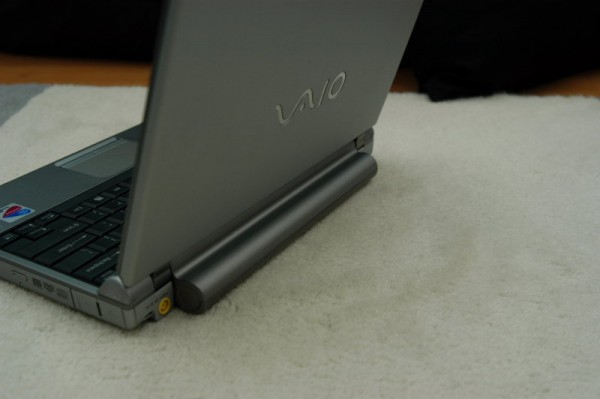
Overall, in terms of small laptops, I really like the T17.
